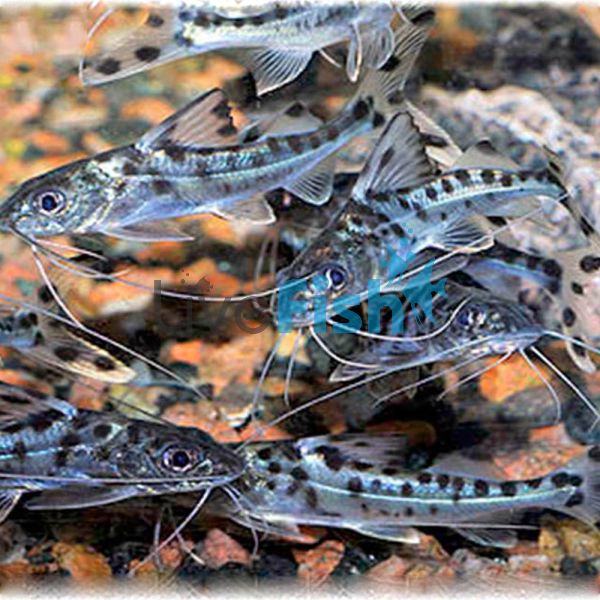Pictus Catfish 7cm
Catfish (order Siluriformes) are a diverse group of fish. Named for their prominent barbels, which give the image of cat-like whiskers, they are found primarily in freshwater environments of all kinds, with species on every continent except Antarctica.
Catfish have no scales. All catfish, except members of Malapteruridae (electric catfish), possess a strong, hollow, bonified leading ray on their dorsal and pectoral fins, through which a stinging protein can be delivered if the fish is irritated.
Catfish are often described as being nocturnal creatures; in other words, they are most active at nighttime. In general terms, catfish prefer to dwell at the bottom of an aquarium (or at the bottom of rivers, lakes, streams and creeks, etc in their natural environments). There are of course exceptions to this general rule, as some species of catfish occupy the mid to surface water areas of an aquarium, such as the Glass Catfishes and the Upside-down Catfish.
Providing hiding places for them is of utmost importance. With careful planning of your aquarium layout, you can not only provide your catfish with hiding places, but you will actually have the benefit of seeing them as well. Suitable materials to use for hiding places include wood, rocks, slate, clean plastic pipe, and aquatic plants.
Catfish generally are excellent tankmates for a wide variety of other species of fish. They can grow between 10-12cm Water Quality · Temperature: 23°C - 26°C. · pH: 6.5—7.5 · General Hardness: 100—150 ppm. Pictus Catfish can be very adversely affected by poor water quality. It is important to ensure that water parameters are suitable, and that tank maintenance is performed regularly. This species is a “greedy feeder” and provides a lot of fun for the aquarist as it gulps huge mouthfuls of food. They will eat any fish food but prefer a carnivorous diet. The Pictus Catfish has a striking appearance, with black spots on a silvery-white background and long whiskers. It makes a fascinating addition to community tanks.




